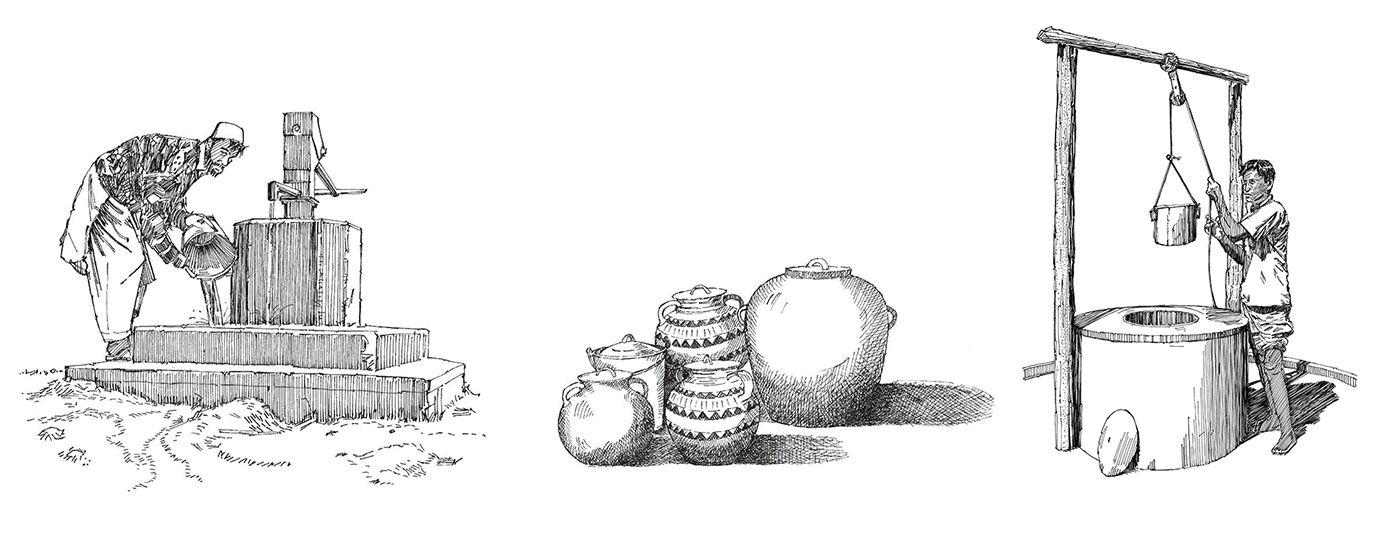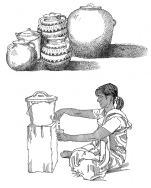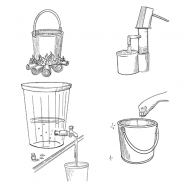30. Clean, safe household water
Overview
Many diseases can be spread through water. Water can look clean when in fact it is not safe to drink until it has been treated. The germs that make people sick are so small that you need a microscope to see them. Clean, safe water is essential to stop the spread of many epidemics. As a volunteer, you can help to make sure that your community has clean safe water to drink, to cook and to clean with.
Safe water sources
The best source of safe clean water is a groundwater source, such as a protected well or borehole. “Protected” means it has a concrete apron or edge around the well or borehole (with no cracks) and is fenced to prevent animals from reaching it.
If you normally use a piped water supply in your community, flooding, or other disasters (such as cyclones) can affect the quality of the water. After flooding, tap water may no longer be safe or clean. In this situation, boil or filter the water or treat it with chemicals.
If safe groundwater is not available, or if you are in doubt about water quality, you can make water clean and safe in other ways:
- Boil water for at least one minute. A rolling boil of one minute will kill germs.
- Use water purification tablets. These are small tablets that you put in water to kill germs. Each type of tablet has specific instructions for use, so read these carefully before using the tablets. You can give tablets to families in the community to clean their water.
- Make sure to underline the importance of clean water when you explain how to use the tablets. Monitor the use of the tablets distributed.
- Promote water filtration. Water can be filtered using ceramic, bio-sand or other types of filters.
- Make sure you follow the instructions for making and cleaning the filter. Clean the filter regularly.
Each way of making water safe has advantages and disadvantages, and requires equipment and resources (purification tablets, water containers or buckets, firewood, time, etc.). The community needs to be able to obtain these resources and use them properly. Work with colleagues in the WASH sector or partners with expertise in water, sanitation and hygiene for more information.
Safe storage and handling
Dirty hands, dirty utensils and dirty containers can contaminate water. So can flies, other insects and rodents. Efforts to make water clean and safe are pointless if water is not stored or handled properly and hygienically.
What to do and how to do it
Understand the community
- Familiarize yourself with the community’s cultural, social and traditional practices and beliefs about water and washing.
- Listen out for rumours and incorrect information. Correct these and report them to your volunteer supervisor.
Promote clean household water
- Promote clean water use. Encourage members of the community to adopt recommended hygiene practices.
- Encourage people to use household water treatments (such as purification tablets) correctly. If they do not treat their water, find out why.
- Encourage people to always wash their hands before they handle drinking water.
- Store water in clean containers. Clean these regularly.
- Make sure that families have clean containers to put water in. Make sure the containers are covered to prevent germs and dirt from getting into the water and making it unsafe.
- If a container has a narrow neck, encourage people to clean it regularly with a soap solution, chemical disinfectant (if available) or pebbles. Narrow-necked containers prevent contamination but are harder to clean.
- If a container has a wide neck, encourage people to keep it covered and design a system for removing water without touching it with your hands. Wide-necked containers are easily contaminated but easier to clean.
- Make sure that families have clean containers to put water in. Make sure the containers are covered to prevent germs and dirt from getting into the water and making it unsafe.

Other resources:
Safe water prevents cholera: Clean water storage safe water (visual aid from the Ghana Red Cross Society)


